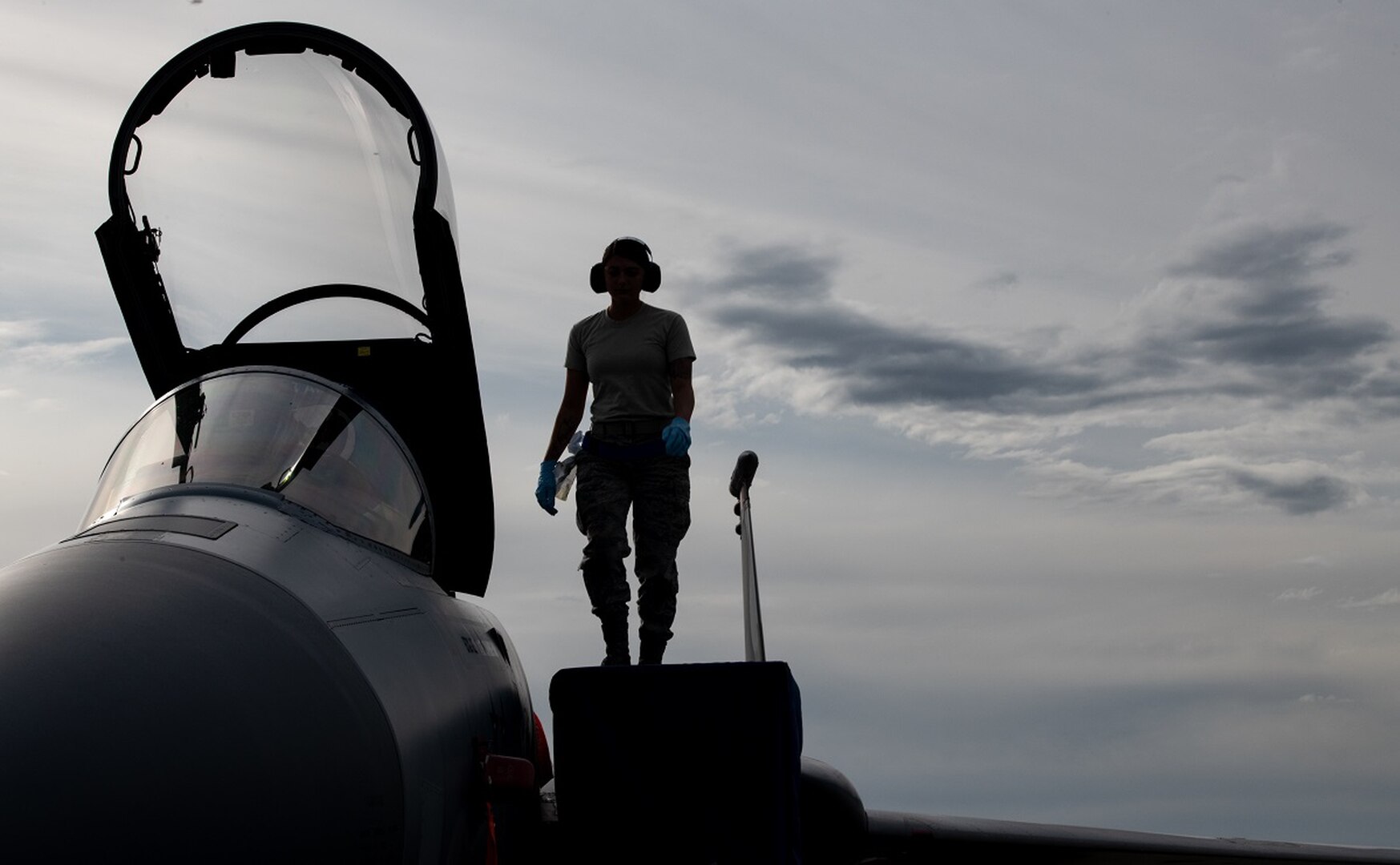The US Air Force is struggling to keep its readiness up to par. In Fiscal Year 2018, for the first time in 6 years, the Air Force’s mission-capable rate fell below 70%.
Of the 5,413 or so aircraft in the fleet, the percentage that are able to fly at any given time has decreased steadily each year since at least fiscal 2012, when 77.9 percent of aircraft were deemed flyable. By fiscal 2017, that metric had plunged to 71.3 percent, and it dipped further to 69.97 percent in 2018, according to statistics obtained by Air Force Times via the Freedom of Information Act.
This is an absolute decrease of approximately 8% since 2012.
This declining trend is happening, despite its massive funding, and with a budget that continues being increased every year. It even has the F-35 fighter jet, the most expensive project in military history and in 2018, the mission-capable rates of this “amazing” fighter were at 49.55%, whereas in 2017 the share was at 54.67%. So, the F-35 actually got less mission-capable the closer it came to being officially commissioned.
The Air Force is also allegedly working hard on reversing the trends, such as introducing extra shifts for Guards.
Before he retired from the position, Defense Secretary Jim Mattis has ordered the Air Force to get its F-16, F-22 and F-35 mission-capable rates up to 80 percent by the end of 2019. That, looking at the numbers for 2019 appears to be an impossible dream.
“The Air Force has got a big hole it’s got to dig itself out of, and they’re taking their time doing it,” said John Venable, a Heritage Foundation fellow and former F-16 pilot who flew in Iraq and Afghanistan.
In all, 39 of the Air Force’s 87 air frames saw declines in readiness, some significantly. And they include some of the service’s most vital aircraft. Among the most alarming declines from fiscal 2017 to FY 2018.
These changes can be traced in the following table:
In a July 17 interview, Col. Bill Maxwell, chief of the Air Force’s maintenance division, said the overall decline is concerning.
“Any degradation in readiness that we have, our ability to be able to perform our mission, is absolutely a concern to a tremendous amount of people,” Maxwell said. “Not least of which are the maintainers and the operators out there in the operational wings, but also all the way up to the Air Staff here as well.”
“I agree that any degradation in readiness is something the USAF will continue to work to understand and mitigate within the resources we have,” Maxwell said. “However, I don’t agree that the numbers provided here provide a valid representation of the Air Force in their simple form.”
The Air Force spokeswoman Ann Stefanek, in an email to the Air Force Times said that these rates don’t do the real state justice.
“Mission capable rates do not equate to Air Force readiness rates. They are just one component assessed at the unit level to help determine how ready a squadron is to meet the threat.”
The Air Force attributes the decline to several factors, according to a July 15 statement from spokesman Robert Leese. The primary culprit is the advancing age of the fleet, which hit 28 years on average across the total force. Notably, the average age of a fighter or attack aircraft was 27 years in 2018, as opposed to 1991 when they were 10 years old on average.
“The longer we extend the service life of our legacy aircraft, the more investment, inspection man-hours, preventive maintenance and manpower they will require,” Leese said.
A part of the reason is that some aged warplanes use unique parts. Whatever could be scavenged from decommissioned warplanes was taken away, but other things need to be ordered from contractors. Something one would imagine would be no problem, keeping in mind the massive budget for defense.
In addition, maintenance works also appear scarce. For years, the Air Force struggled with severe shortfalls in its maintenance career fields. At one point, the Air Force was down about 4,000 maintainers.
This was allegedly exacerbated by the Air Force’s downsizing in 2014. Since then they’ve continued receiving more and more funds, but for fewer people. The shortfall in 2019 appears to be solved, but now there is a skill issue, there’s more than enough lower level maintenance workers, and not nearly enough higher-level ones.
The same can be said about pilots, since low mission-capable rates for warplanes means that there’s fewer machines to also train on and acquire experience.
Time will show whether Jim Mattis’ plan would turn into reality by the end of 2019. But it is a fact that the military in the US receives bigger budgets each year.
For 2020 and 2021, the Budget Act relegates more funds for military than every other branch of government combined.
MORE ON THE TOPIC:







